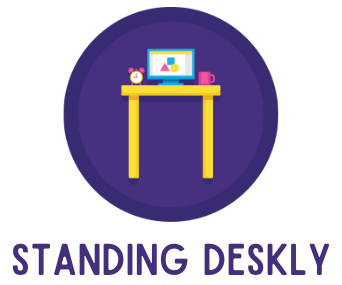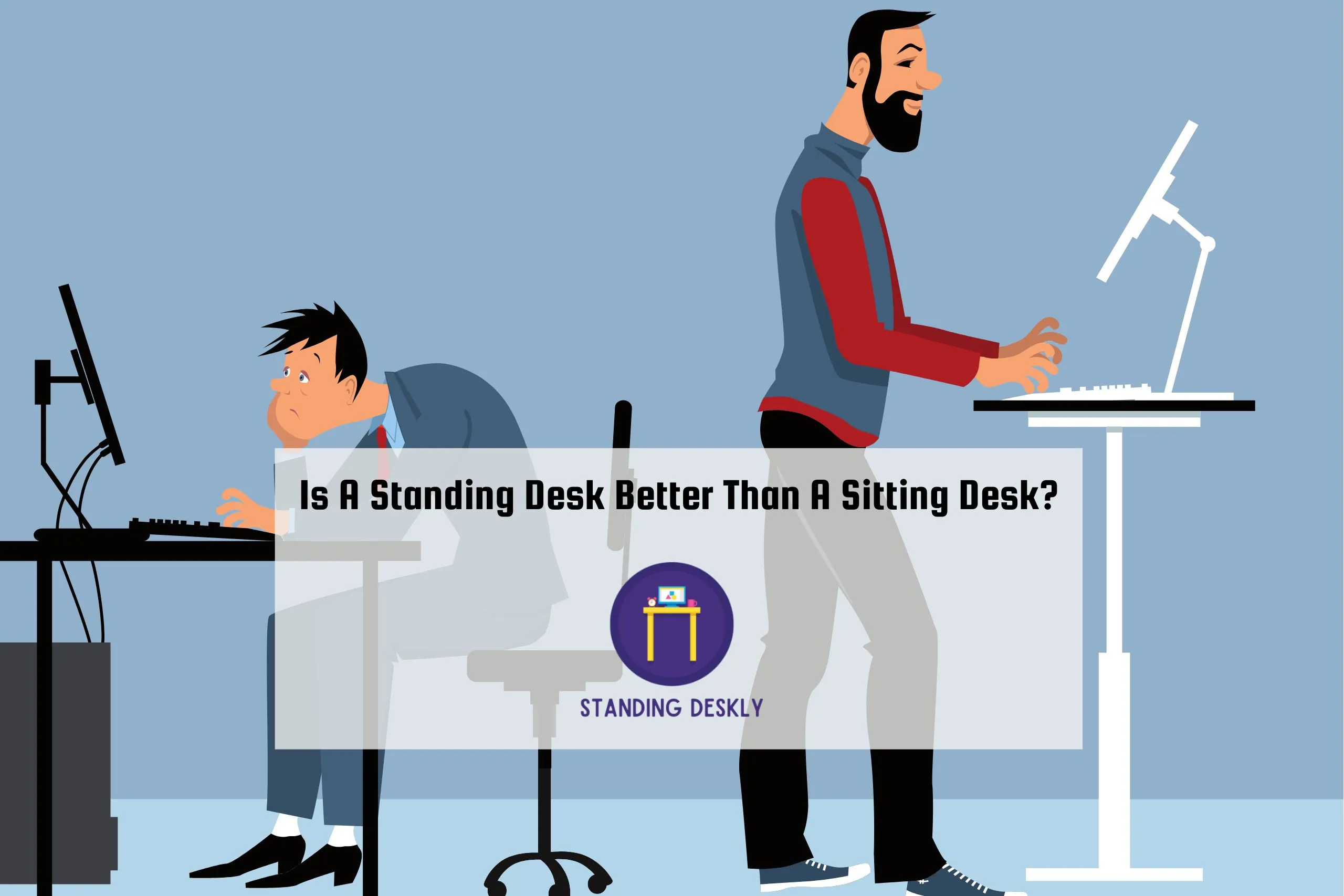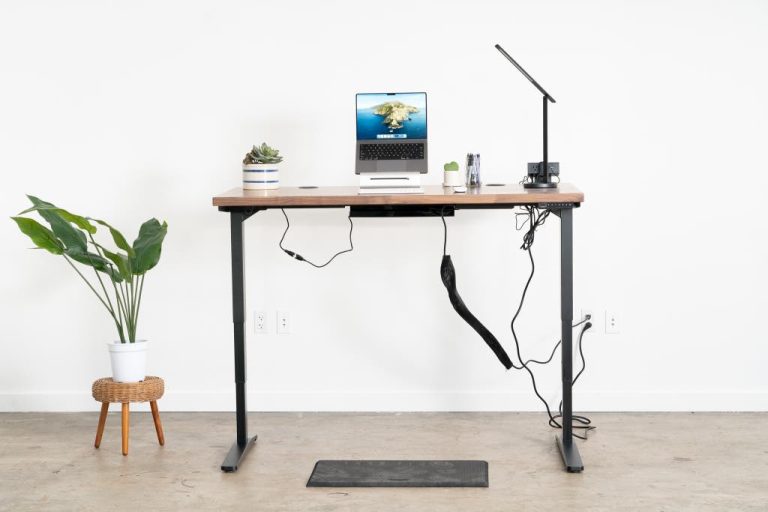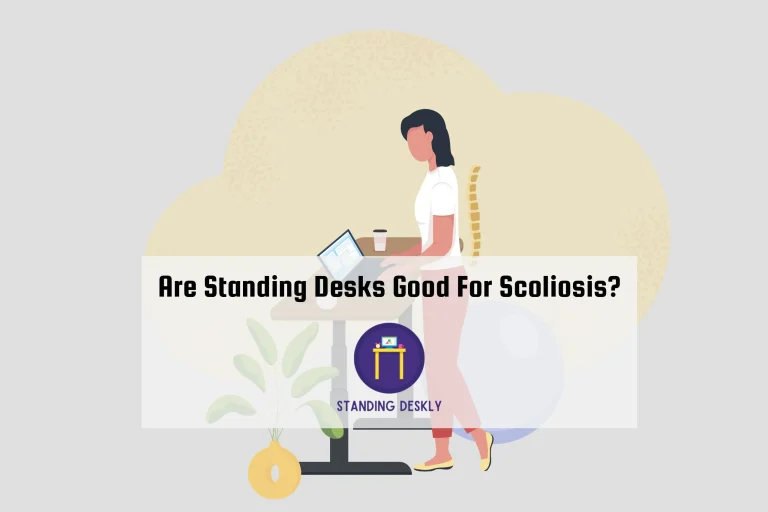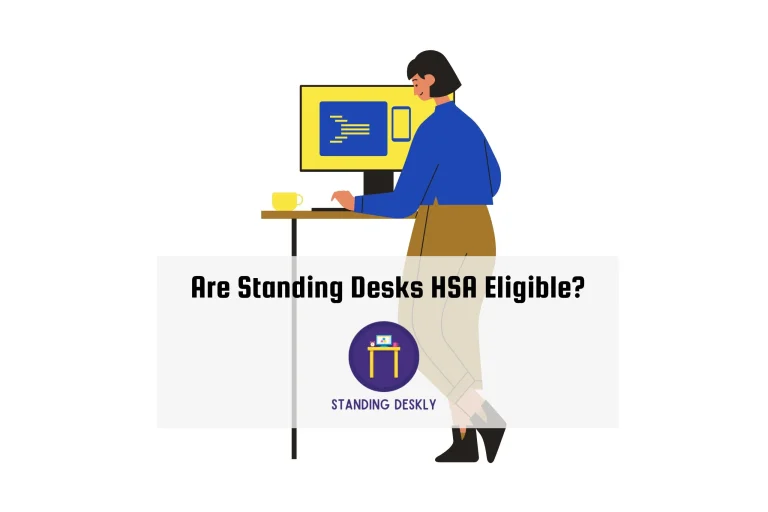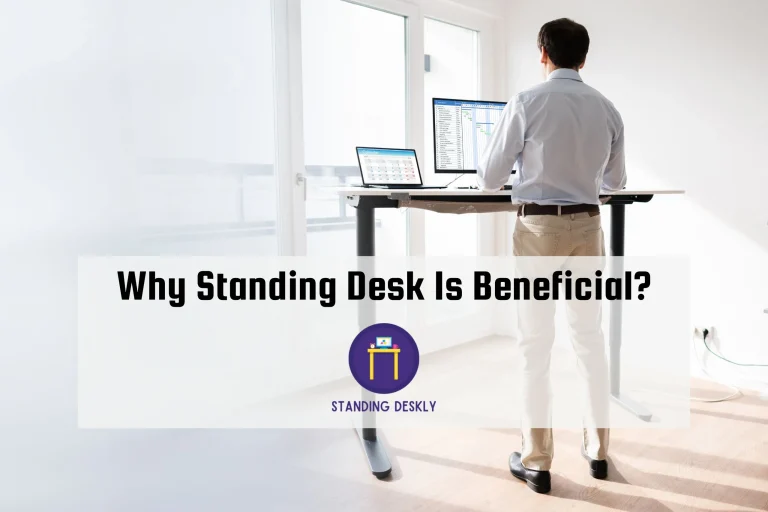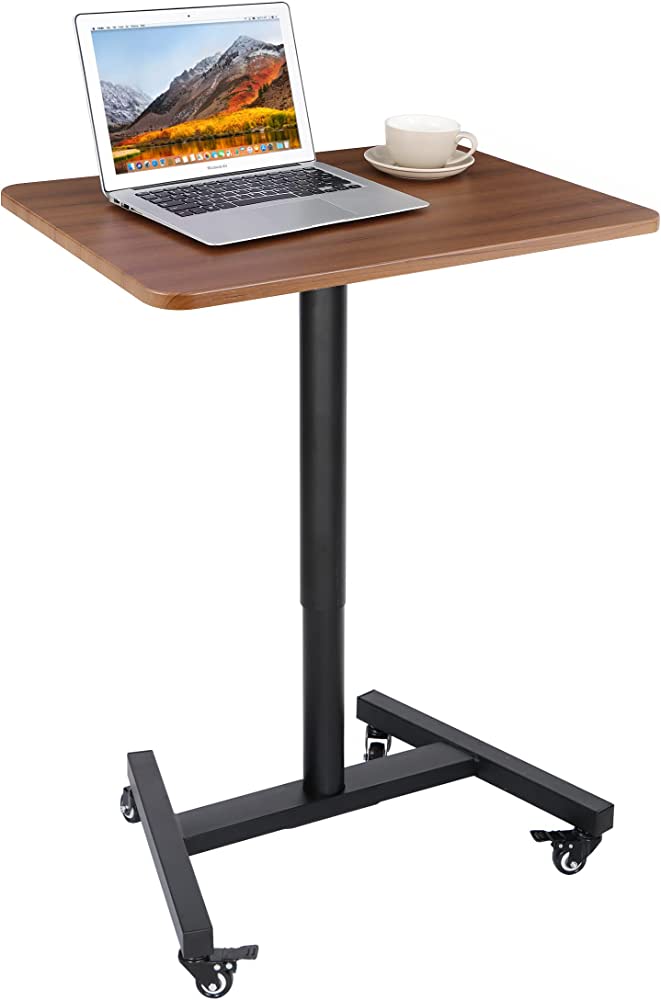Is A Standing Desk Better Than A Sitting Desk?
As technology advances and our lives become ever more digitized, the way we work is changing as well. With this in mind, one of the latest trends to hit the workplace is the standing desk, a desk designed for people who want to stand while they work. But is a standing desk better than a sitting desk?
It depends a lot on the person. Some people have more energy and can concentrate better when they stand, while others would rather sit.
No clear evidence shows that one is better than the other.
But if your job or lifestyle keeps you from moving around much, a standing desk could help you move around more and avoid some of the health risks that come with sitting for long periods of time.
Benefits of Standing Desks
Standing desks offer a number of potential benefits, ranging from physical and mental health advantages to improved productivity. For starters, standing while working can help people reduce back pain and neck strain while also boosting energy levels throughout the day. Plus, those who stand while they work may be more productive due to the increased blood flow that comes with standing up.
In addition to these physical benefits, using a standing desk can also have positive impacts on mental health. Studies have found that standing during work hours increases focus and concentration levels and reduces fatigue. This is because standing activates various parts of the body, creating a stronger connection between mind and body that has been linked to better cognitive performance.
Another key benefit of using a standing desk is the potential weight loss associated with it. Since your body is constantly in motion when you’re upright, you’ll be burning more calories throughout the day than if you were sitting at a traditional desk for an extended period of time. So if you’re looking for ways to stay active without having to completely disrupt your daily routine, then investing in a standing desk could be a great way to do that.
Drawbacks of Standing Desks
One of the main drawbacks of standing desks is that they can be uncomfortable to use for long periods of time. While some people may find it more comfortable to stand than sit, others may find standing for extended periods of time to be strenuous and tiring. Additionally, standing for too long can cause fatigue, joint pain, and, in some cases, even back problems.
Furthermore, if you are a regular user of a standing desk, you will also require special ergonomic equipment, such as an anti-fatigue mat or adjustable monitor riser, to make your workspace more comfortable. This additional expense can add up quickly and may not be feasible for those on a tight budget.
Another problem with using a standing desk is that it takes up more space than a traditional sitting desk due to its increased size and height. This means that if you don’t have much room in your office or home workspace, you might run into space constraints when setting up your standing desk.
Finally, standing desks can take some getting used to, and it may take time before you become adjusted enough to maintain good posture while using one. For many people, this can mean months before they feel comfortable enough with their setup to get any real work done.
Are standing desks worth it?
When it comes to deciding whether or not a standing desk is worth it, there are several factors that should be considered. For starters, the benefits of standing desks include increased productivity and focus, improved posture and circulation, reduced fatigue and tension headaches, as well as better digestion. These are all great reasons to invest in a standing desk if you find yourself sitting at your desk for an extended period of time each day.
On the other hand, there may be some drawbacks to using a standing desk as well. Standing for long periods of time can become uncomfortable or even tiring, forcing users to switch back and forth between sitting and standing throughout the day. Additionally, standing desks can be more expensive than regular desks, depending on the model you choose. Finally, if you stand too frequently or for too long without taking breaks or making adjustments in your posture periodically throughout the day, this could lead to leg and back pain down the line.
Overall, evaluating whether a standing desk is worth it or not comes down to personal preference and how much you think you would benefit from one versus how much discomfort it may cause. If you have difficulty focusing while sitting at your desk for extended periods of time or find that your posture begins to suffer, then a standing desk might be beneficial for you. On the other hand, if you don’t feel any particular need to switch up your work set-up, then investing in a more expensive option like a sit-stand workspace might not be best for you.
Conclusion: Evaluating Pros and Cons
When it comes to standing desks, there are both pros and cons that must be considered. On the one hand, some people say that using a standing desk gives them more energy and helps them stand up straighter. On the other hand, there are potential health risks associated with excessive standing. Ultimately, it is up to the individual to decide whether a standing desk will work for them or not. If you plan on using a standing desk, then make sure to take frequent breaks and pay attention to any signs of discomfort or strain. By taking these precautions, you can enjoy the benefits of a standing desk without risking your health.
Hey there!
I hope you’re enjoying the article you’re reading! I value your feedback and would love to hear your thoughts on how to improve it. If you have any suggestions, please feel free to send an email at editorial@standingdeskly.com along with the article URL.
Thank you for taking the time to help me improve my content. Your suggestions are greatly appreciated!

I’m the author and developer of Standingdeskly, the go-to site for standing desk enthusiasts. I provide comprehensive reviews of standing desks along with office setup tips. Combining years of research and personal experience, our goal is to make it easy for you to find the perfect standing desk tailored to your needs.
